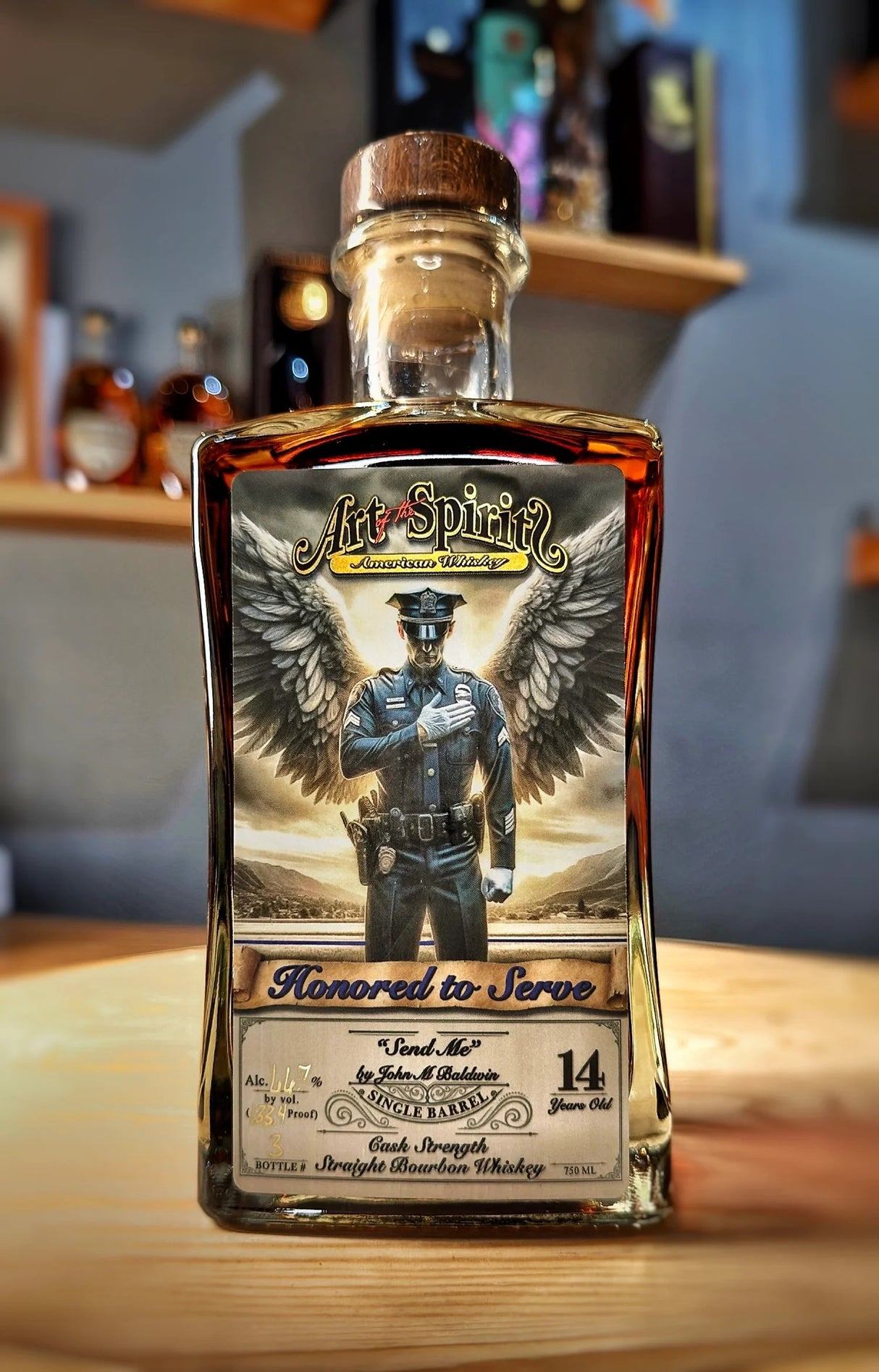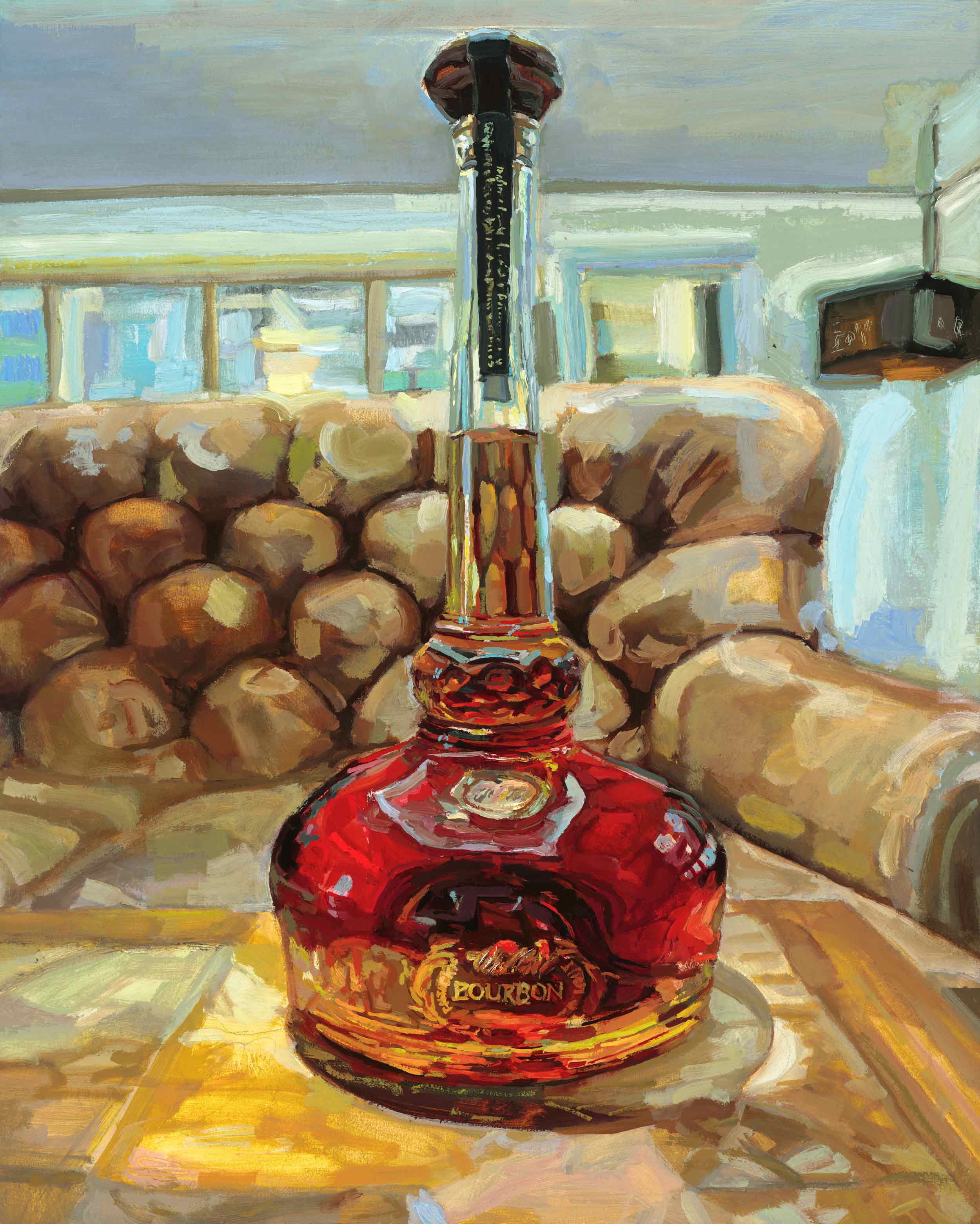Limited Edition: Discover Exclusive Bourbon Art Pieces for Collectors
The Importance of Whiskey Art in Celebrating Heritage and Craftsmanship in the Beverage Industry
The elaborate relationship in between bourbon art and the celebration of heritage and workmanship within the beverage sector can not be overemphasized. Via attentively made tags and containers, scotch brands encapsulate their historic origins and the artisanal skills that define their manufacturing approaches. This imaginative measurement not only enhances market allure yet likewise serves as a conduit for social narration, fostering a much deeper connection between the consumer and the craft. As we check out the various facets of this subject, interesting concerns about the influence of modern-day patterns on traditional techniques develop, triggering further exam.
The Historical Roots of Whiskey
At the heart of whiskey's appeal lies an abundant tapestry of historic roots that trace back to ancient civilizations. The origins of bourbon can be linked to the purification practices of the Sumerians and Babylonians around 2000 BCE, where very early forms of fermented grain beverages started to arise. It was in the Middle Ages that the art of purification evolved substantially, particularly in Ireland and Scotland, leading to the development of bourbon as we know it today.
The term "whiskey" itself originates from the Gaelic word "uisce beatha," suggesting "water of life." This phrase underscores the social value of whiskey in Celtic societies, where it was usually associated with rituals, events, and public bonding. By the 15th century, purification ended up being an identified craft within reclusive communities, leading the way for the establishment of lawful distilleries.
As profession courses increased, scotch's appeal grew, transcending regional boundaries and catching the rate of interest of aficionados worldwide. Realism Art. This historic trip reflects not just the workmanship behind bourbon manufacturing but also its essential function in social and cultural contexts, marking it as a substantial drink throughout background
Artistic Expression in Branding
Bourbon branding stands as an engaging junction of virtuosity and business, where aesthetic identification plays a critical duty in shaping customer perception. The appearances of scotch tags, product packaging, and advertising and marketing materials mirror not only the brand's story but also its core values and heritage. With imaginative expression, distilleries communicate a story that resonates with customers, evoking emotions and sparking links.
Making use of shade, typography, and images in branding offers to distinguish products in a saturated market. Standard themes might evoke a feeling of credibility and craftsmanship, while modern-day layouts can signify technology and forward-thinking. This calculated imaginative instructions boosts brand acknowledgment and commitment, allowing customers to forge a personal partnership with the bourbon they select.
Furthermore, creative expression in branding often functions as a party of regional heritage. Distilleries regularly include neighborhood symbols or historical referrals into their styles, developing a local color that invites customers to take part in a broader cultural experience. Ultimately, the virtuosity behind whiskey branding not just boosts visual appeal yet likewise enhances the total story of the brand, promoting a much deeper admiration for the craftsmanship and heritage ingrained in each bottle.
Workmanship in Bottle Design
The virtuosity evident in scotch branding extends past visual identity to incorporate the craftsmanship entailed in bottle design. Each bottle serves as a vessel not just for the spirit within, but also for the tale it outlines its practice, origin, and high quality. The style procedure calls for thorough interest to detail, as elements such as closure, product, and form contribute significantly to the overall assumption of the bourbon.
Workmanship in bottle layout includes choosing top notch glass more helpful hints that can boost the bourbon's color and clarity, while also giving a responsive experience for the customer. The silhouette of the bottle need to be both useful and aesthetically attractive, usually mirroring the heritage of the brand name. Many distilleries go with distinct try this site shapes or embossed logos that evoke a sense of authenticity and background.
In addition, the tag layout and typography play a crucial role in connecting the brand name's narrative. Bourbon Art. A well-crafted bottle not just captivates the customer's eye however also enhances the brand name's commitment to top quality and custom. In this method, the craftsmanship of container style becomes a vital facet of the whiskey experience, combining artistry with an extensive respect for heritage
Social Relevance of Whiskey Art
Commemorating tradition and workmanship, the social significance of whiskey art transcends mere aesthetic appeals, linking with the historical and social stories of the areas from which it stems. Each bottle serves as a canvas, portraying the one-of-a-kind stories, mythology, and customs that have actually shaped regional whiskey-making practices. The complex designs often reflect the heritage of the distillers, including symbols and concepts that resonate with the culture and worths of their neighborhoods.

In addition, bourbon art plays a crucial role in common gatherings and events, acting as a tangible web link in helpful resources between people and their shared experiences. By valuing the artistry in whiskey product packaging, customers cultivate a much deeper understanding and respect for the craft, inevitably improving their enjoyment of the drink itself.
Modern Trends in Whiskey Presentation
Recently, the presentation of whiskey has progressed to reflect modern tastes and trends while still honoring typical craftsmanship - Whiskey Art. Distilleries are progressively concentrating on aesthetic components that boost the total drinking experience, bridging the space in between heritage and modernity
Innovative bottle designs have emerged, often incorporating sustainable products and imaginative tags that tell engaging stories. Several brand names now team up with regional musicians, infusing their products with unique visual expressions that reverberate with consumers. In addition, limited-edition releases are typically packaged in collectible containers, including value and allure for connoisseurs.

Final Thought
In conclusion, whiskey art acts as a crucial channel for sharing the heritage and craftsmanship inherent in the drink market. Through detailed branding, innovative bottle styles, and culturally significant artistic elements, bourbon brand names effectively recognize their customs and link with customers. This creative narrative not only boosts the appreciation of scotch but likewise reinforces community identification and satisfaction among manufacturers. Ultimately, whiskey art plays an important function in preserving and commemorating the rich cultural tapestry of whiskey-making.


Workmanship in container style involves selecting premium glass that can improve the scotch's color and quality, while also providing a tactile experience for the customer. In this method, the craftsmanship of bottle layout ends up being an important facet of the whiskey experience, combining artistry with a profound respect for heritage.
In final thought, whiskey art serves as a crucial conduit for expressing the heritage and workmanship intrinsic in the drink industry.